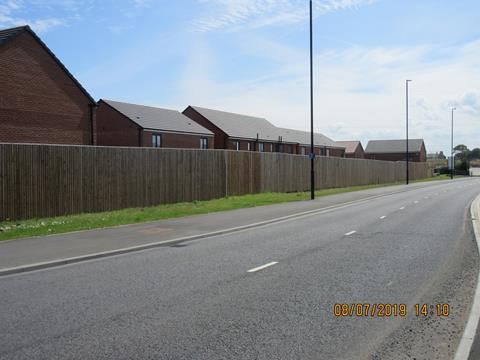Influential Building for Life toolkit is updated and tries to discourage car-dependent neighbourhoods
Design guidance which seeks to end the creation of new housing estates formed as “island developments” has been published with the backing of Homes England and the NHS.

The Building for a Healthy Life guidance, on how to design well-connected and healthy new developments, is an update to the existing Building for Life design guide used by councils up and down the country to ensure schemes are well-developed.
Homes England already requires developers it works with to commit to using the design toolkit in drawing up their plans, and said it will now require them to use the updated guidance.
The term “island development” is used to describe new neighbourhoods which can be accesses by just one entry in and out, meaning residents have no other entry or exit points from the schemes. This type of layout encourages many residents into their cars as even the shortest journeys require them to travel all the way to the estate’s exit point.
The update was commissioned by NHS England and NHS Improvement in order to further embed principles of active neighbourhoods into the toolkit, encouraging residents to walk and cycle where possible. It includes expanded sections on how to design places that encourage residents out of their cars. It is aimed at integrating the findings of the three-year Healthy New Towns Programme run by the NHS.
The co-author of the updated guide, Design for Homes chief executive David Birkbeck, said the guide was a starting point for developers, local authorities, communities and other stakeholders to agree on key aspects of a design, such as how new development will connect to existing communities and how people will be able move between the two.
>> Also read: Stirling Prize-winner calls for carbon tax on car-dependent housing
He said: “One of the key new things we’re trying to do here is say ’no’ to these island developments.
“In recent years the types of car journeys that have increased are these really short ones. Getting people out of their cars for these short trips must be a key aim for new-builds.”
As well as grafting a series of recommendations around active travel on to the existing Building for Life toolkit, the new design guide, which is referenced in the National Planning Policy Framework, includes illustrated examples of good and bad practice to demonstrate what the principles outlined look like in practice.

The new guidelines use the same 12-point structure as their predecessor, with examples of good practice that would add up to a green light and bad practice that would earn a red light. However, the authors are clear the guidance is intended to prompt discussion rather than as a tick-box scoring system.
The authors said that where local authorities have cited Building for Life in their Local Plans and Supplementary Planning Documents, they will be able use Building for a Healthy Life without having to rewrite existing policy documents, as it is simply a new name for Building for Life.
In January an audit of placemaking and design of new housing developments found that while design had improved somewhat in the last decade, schemes were overwhelmingly still of either “poor” or “mediocre” design quality.
>> David Rudlin: Housing that hits the heights of mediocrity
>> Also read: Government urged to set up design quality unit for England
Sadie Morgan, director of dRMM and a board member of Homes England, said the new design guidance was a big step forward in supporting placemaking for healthier, more integrated communities. She said: “We know that the existing guidance has focused developers’ attention on high-quality design and these new guidelines will build on that success.
“People’s homes and neighbourhoods have a huge impact on their wellbeing and Homes England is committing to using these new guidelines to ensure that new developments encourage and enable better health.”
















No comments yet